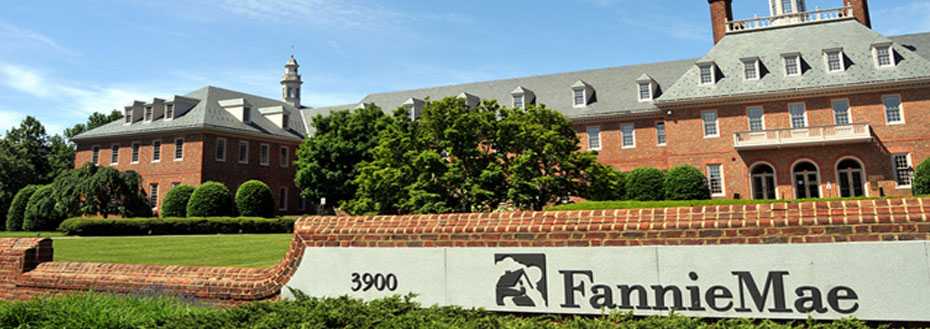If you are planning to apply for a mortgage plan, there are two vital terms you should be aware about - Freddie Mac (Federal Home Loan Mortgage Corporation) or FHLMC, and Fannie Mae (Federal National Mortgage Association) or FNMA.
Freddie Mac and Fannie Mae are two different GSEs (Government Sponsored Enterprises), but still remain private companies which compete with each other in the mortgage vertical. These are among the largest financial institutions in the world and are together responsible for combined mortgage assets worth $5 Trillion. While these two are one of the biggest names of the mortgage industry, but still most of the Americans do not completely understand the scope or the nature of what Freddie Mac and Fannie Mae actually do and what role they play in the American mortgage market.
This post will share deep insights about what does Fannie Mae do and what does Freddie Mac do while discussing 5 vital things which you should know about them -
What Does the Freddie Mac and Fannie Mae Actually Do?
The main role played by the Freddie Mac and Fannie Mae is to provide the required liquidity to the mortgage finance system of America. Freddie and Fannie both purchase home loans that are made by private firms, re-package those home loans into mortgage-backed securities and guarantee the repayment of the loan amount with applicable interest to the investors.
In simple words, both buy mortgages from the banks in the secondary mortgage market, then pool these loans before selling them to the investors as mortgage-backed securities in an open market.
One of the main things to know about Fannie Mae and Freddie Mac is that they follow the same business model and work in a similar manner. At the same time, the main difference between the two is that while Fannie Mae buys mortgage loans from different commercial banks, Freddie Mac considers smaller banks to buy such mortgage loans. These smaller banks are also known as "thrifts".
What Role Are Freddie and Fannie Playing in the Mortgage Market?
Both these national institutions have established themselves in the mortgage market as a key source of liquidity, but when the credit market turmoil happened, their significance amplified greatly. In early 2000s, when a high number of homeowners in America defaulted on their home loans, investors turned away their heads from many of the investments that were backed by such mortgages.
But, as Freddie and Fannie always purchase fixed rate home loans with a sound credit, investors irrespective of the overall home loan & mortgage scenario continue buying their securities. At the same time, these companies are perceived to have the inherent backing of the Federal government. Owing to this, the banks continued to make the new home loans available even when the housing prices are falling nationwide.
Taxpayer Bailout for Freddie and Fannie
Both Freddie Mac and Fannie Mae experienced failure in a large part owing to the wrong business decisions made by them before the housing loan crash. Also, as they held insufficient capital, it made the scenario worse.
Unlike most of other investment firms, which disintegrate their investments and generally have multiple lines of businesses, Freddie & Fannie only worked on a single line of business, that is, residential mortgage finance. Since they did not have any other source of income, therefore, when home prices began to fall in the early 2000s, they started facing a lot of trouble.
In 2008, Freddie and Fannie lost a combined wealth of $47 Billion, and this forced the companies to dig deeper into their capital reserves. When they carried out an in-depth analysis, it became clear that a significant part of their losses came from Alt-A-Loans. While the loans from Alt-A-Loans only accounted for the 11 percent of the total business of the firm, but still they experienced a major loss nonetheless. However, it was only the beginning. In the span of four years, that is, from 2008 to 2012, both the firms combined lost $265 Billion! More than 60% of this amount lost was attributable to risk oriented products purchased by these firms between 2006 and 2007.
By the late 2008, that is, almost a year after when the housing crisis started, the US mortgage market was all but abandoned by major Wall Street Firms. Also, at this time the major investors, including the pension funds across the globe continued to hold major amounts of Freddie Mac and Fannie Mae securities. Thus, the Bush administration in 2008 placed both Freddie Mac and Fannie Mae into a conservatorship of the government, and they continue to work under the same till date.
Current State of Freddie Mac and Fannie Mae
After recurring heavy losses, both the companies are doing quite good now. With rising home prices, both the companies are making profits.
The companies started making profit in August 2012, and the improved finances of both the firms made the U.S Treasury Department in 2012 re-frame the government bailout terms. As per the previous agreement, Freddie and Fannie drew a significant amount of money from the Treasury Department for bolstering their capital reserves. In return, the companies agreed to issue preferred stock to the U.S government on which they paid a mandatory dividend of 10 percent. As per the rules, the Treasury will simply claim all the profits of Freddie and Fannie at the end of the each quarter, while providing capital when required in the event of the quarterly loss.
What Should the Homeowners Know About Freddie Mac and Fannie Mae Today?
Today, every home loan which is made in the country is backed by the federal government and everyone agrees that the current level of support would be unsustainable in the long run. Eventually, the private capital will have to assume more risk in the U.S mortgage market.
As per the current scenario, two vital questions arise in front of the policy makers -
- In the future, what type of presence should the federal government have in the housing market?
- How should the people transition into this new housing finance system?
While the rescue of the Fannie Mae and Freddie Mac contrasted with the IndyMac Bank that was based in California, but IndyMac did not get the same favor from the government. Apart from Fannie Mae and Freddie Mac, this bank collapse was one of the biggest financial institutions to fail in the entire history of the USA.
With the governments' decision pertaining to rescue and save Fannie Mae and Freddie Mac, it became clear that the federal government wanted to save the country's housing market and the mortgage system that was popularized by these two firms. The smart reforms made by the U.S government in the housing finance system indicate the key role played by the government to ensure that the country does not undergo a huge crisis due to this sector.
With the governments' backing, homeowners today can certainly trust Fannie Mae and Freddie Mac today, and these two companies can also seek a prosperous future.
Flatworld Solutions - Partner with the Mortgage Industry Thought Leaders Today!
At Flatworld Solutions, we believe in providing mortgage support services which not only understand the need of the hour for most mortgage service providers in the US, but do so with an inherent knowledge of how the system works.
We consider ourselves as one of the, if not the best mortgage service provider for international clients this side of the globe, and our services are characterized by efficient processes which can help you achieve operational goals faster.
Contact us right away and chat with one of our experts to understand how our solutions can solve your business problems.
Contact UsOur Customers





Case Studies
-
Flatworld's Automated Solution - MSuite Reduced Loan Closing Time Significantly for a US Client
-
FWS Used its Tool, MSuite, to Enable a Leading Mortgage Company Streamline its Processes
-
FWS Used its Tool, MSuite, to Enable a Leading Mortgage Company Streamline its Processes
-
FWS Automated the Data Indexing and Extraction Process Using its Tool, MSuite, For a Top Mortgage Company
-
Flatworld Automated Underwriting Processes for a Leading US Residential Lender

USA
Flatworld Solutions
116 Village Blvd, Suite 200, Princeton, NJ 08540
PHILIPPINES
Aeon Towers, J.P. Laurel Avenue, Bajada, Davao 8000
KSS Building, Buhangin Road Cor Olive Street, Davao City 8000




